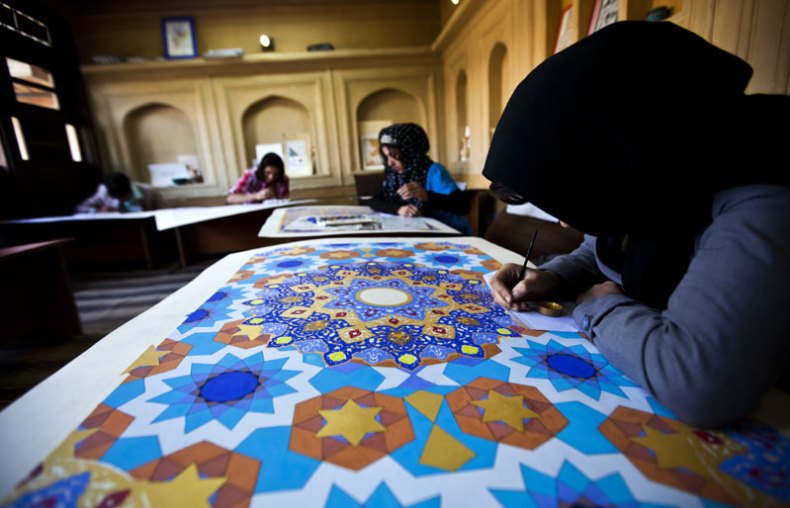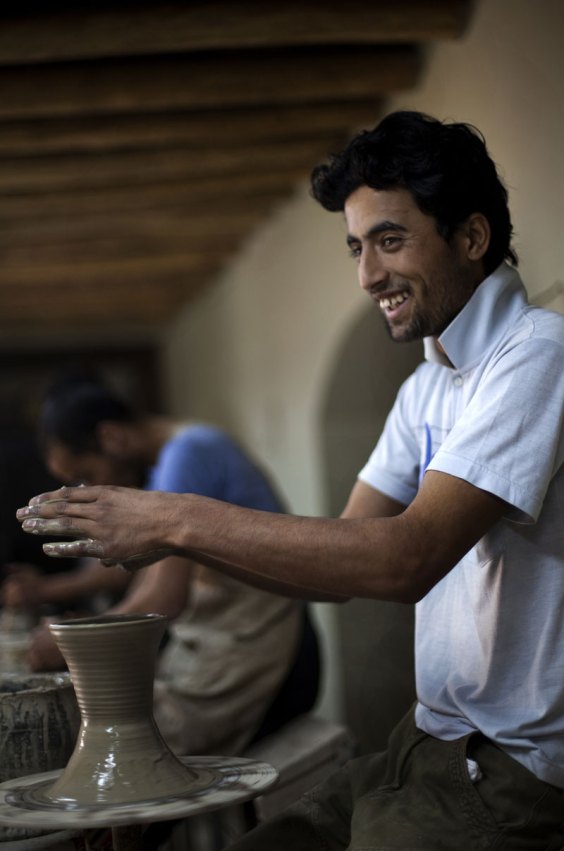Artists Transforming Afghanistan
From its critical position on the ancient Silk Road that stretches from Europe to China, Afghanistan absorbed traditions from India, Persia, and Central Asia and blended them into a distinct artistic culture. Decades of civil unrest that began in the 1970s nearly destroyed this vital heritage. Many of Afghanistan’s artisans were forced to leave their country or give up their craft. The old city of Kabul, once a bustling center of craft and commerce, fell into ruin.
The British non-governmental organization Turquoise Mountain, founded in 2006 at the request of HRH The Prince of Wales and the President of Afghanistan, has transformed the Murad Khani district of Old Kabul from slum conditions into a vibrant cultural and economic center. The organization has renovated historic buildings, opened a primary school and a medical clinic, and rebuilt necessary infrastructure. It has founded Afghanistan’s premier institution for vocational training in the arts. Dedicated to teaching a new generation of Afghan artisans in woodwork, calligraphy, ceramics, jewelry design, and other crafts, Turquoise Mountain is reviving the nation’s proud cultural legacy.
To share this transformative story of people, places, and heritage in Afghanistan, the Freer and Sackler Galleries will recreate a visit to Old Kabul, transforming galleries into an Afghan caravanserai, complete with artisan stalls and architectural elements, immersive video and large-scale photographs. Visiting artisans from Murad Khani will demonstrate their craft and share their experiences, allowing visitors to experience Afghanistan’s rich culture and national pride.
Preview the exhibition below | The Top Five Exhibitions Opening This Week

Image courtesy Turquoise Mountain

Image courtesy Turquoise Mountain

Image courtesy Turquoise Mountain

Image courtesy Turquoise Mountain

Image courtesy Turquoise Mountain











![Masterpiece [Re]discovery 2022. Photo: Ben Fisher Photography, courtesy of Masterpiece London](http://www.apollo-magazine.com/wp-content/uploads/2022/07/MPL2022_4263.jpg)
The threat to Sudan’s cultural heritage